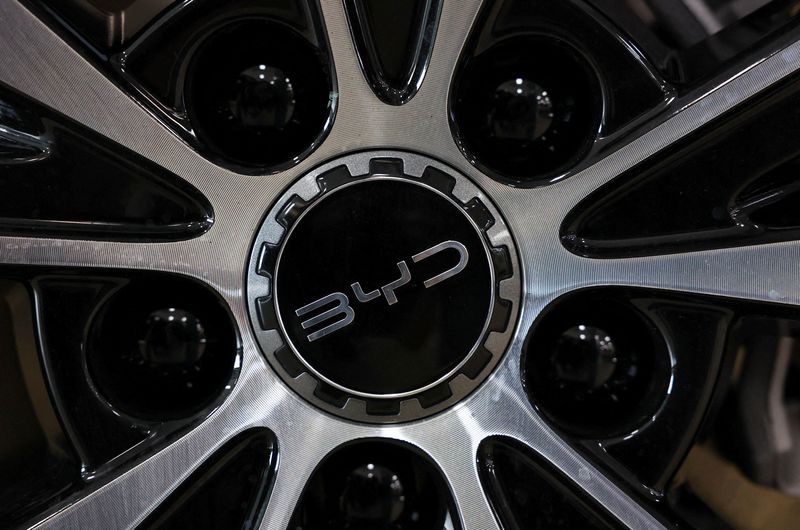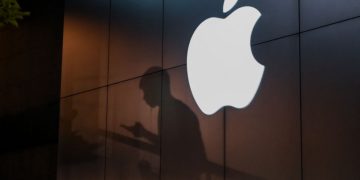Oracle Stock Drops 7% as Skeptics Question Lofty AI Targets
Oracle shares fell by 7% following the company’s ambitious AI announcements, as investor optimism gave way to skepticism about the feasibility and profitability of its bold growth plans.
The tech giant recently laid out aggressive long-term goals tied to its AI cloud infrastructure business, including multibillion-dollar revenue targets and plans to become a dominant player in AI compute and services. However, concerns have surfaced over whether Oracle can deliver on these promises without straining its margins, resources, or credibility.
Much of the worry centers around the costs associated with scaling AI infrastructure—such as data center expansion, power demands, GPU procurement, and cloud service delivery. While these investments could unlock major growth in the long term, they require significant upfront capital. Investors are questioning whether Oracle’s AI business, which currently has thinner margins compared to its traditional software offerings, can grow profitably in the near future.

Additionally, Oracle’s AI strategy appears to rely heavily on a small group of large enterprise clients, raising concerns about revenue concentration and execution risk. While major deals are encouraging, they may not scale fast enough to justify the company’s projected growth rates.
Valuation is also a key factor. Oracle’s stock had rallied strongly ahead of the announcement, pricing in a lot of future growth. The recent drop reflects growing caution as investors reassess the balance between opportunity and risk.
To rebuild confidence, Oracle will need to demonstrate clear progress on profitability, efficient infrastructure build-out, and diversified client acquisition in the AI space. Until then, the market appears unwilling to fully buy into the company’s AI-driven narrative—at least not without stronger proof of execution.
AI Headshots Are Changing the Way Job Seekers Are Seen—and Hired—in a Tough Labor Market
In a competitive job market, first impressions count more than ever—and increasingly, they’re being shaped by artificial intelligence. Job seekers are turning to AI-generated headshots to present a polished, professional image without the high cost of a traditional photoshoot.
These tools allow users to upload a few casual selfies and receive studio-quality headshots in minutes. The result: sharp, business-ready portraits that help candidates stand out on platforms like LinkedIn or in digital resumes. For those early in their careers or transitioning into new fields, it’s an affordable way to boost their visual presence and credibility.
Professional presentation can influence how quickly a recruiter engages with a candidate’s profile. A clean, confident headshot suggests preparation and seriousness—key signals in a hiring environment where employers often sift through hundreds of applications for a single role.

However, the growing use of AI headshots also brings new questions. Some recruiters express concerns about authenticity, especially if the images are overly edited or don’t reflect the person’s real appearance. There’s also a risk of homogenization—AI-generated images can lack personality or create overly similar looks across candidates.
Despite these concerns, many hiring managers are open to AI-enhanced photos, as long as the image feels professional and truthful. For job seekers, the key is using AI to enhance—not mask—their identity. The photo should still resemble them in real life and align with the tone of the industry they’re pursuing.
In a labor market where standing out is essential, AI headshots have become a practical tool for modern job seekers. When combined with strong skills, clear communication, and a compelling application, they can help open doors—and make that crucial first impression count.
Proxy Advisor ISS Recommends Tesla Shareholders Oppose Elon Musk’s $1 Trillion Pay Plan
Proxy advisory firm ISS has urged Tesla shareholders to vote against Elon Musk’s proposed $1 trillion compensation package, arguing the scale and structure of the deal raise serious governance concerns. The recommendation comes ahead of a shareholder vote scheduled for early November, placing renewed focus on how much value investors place on Musk’s leadership versus potential risks to corporate oversight.
The pay plan, one of the largest ever proposed for a CEO, ties Musk’s compensation to highly ambitious performance goals, including massive increases in Tesla’s market value, vehicle production, and future business lines like autonomous driving and robotics. If achieved, these targets could lead to a payout worth hundreds of billions of dollars in stock options over time.
However, ISS argues that the package lacks sufficient safeguards. Critics worry that the structure disproportionately rewards Musk for performance that may not align with long-term shareholder interests. Others question whether such an enormous incentive is necessary, especially given Musk’s existing wealth and large stake in the company.
The advisory firm also raised concerns about Musk’s divided attention, given his leadership roles at multiple other companies. They suggest that the plan doesn’t do enough to ensure his full commitment to Tesla’s long-term success.

Tesla’s board, meanwhile, defends the proposal as a bold but necessary move to retain and motivate one of the world’s most visionary CEOs. They argue that Musk’s track record justifies the scale of the reward.
While ISS’s recommendation is non-binding, it holds significant influence, particularly among institutional investors. The outcome of the vote will signal whether shareholders are willing to embrace Musk’s high-risk, high-reward leadership—or demand more conservative and accountable corporate governance at one of the world’s most valuable companies.
$500 Purple Cables Put This Little-Known Company in the Middle of the AI Boom
In the race to build the next generation of AI infrastructure, one lesser-known company has emerged as an unlikely winner—thanks to its $500 purple cables.
These high-performance cables, used to connect graphics processing units (GPUs) inside data centers, are made by a relatively small semiconductor firm. As tech giants like Microsoft, Amazon, and Google build out massive AI clusters, the demand for reliable, high-speed interconnects has exploded—and this company’s specialty cables have become critical to keeping data flowing between GPUs at lightning speed.
Unlike standard network cables, these active electrical cables (AECs) are engineered for ultra-low latency and high bandwidth, making them ideal for the complex architectures behind AI workloads. With more GPUs being clustered together than ever before, data centers require not one, but multiple cables per server—sometimes up to nine per unit. This shift has rapidly multiplied demand.

As a result, the company has seen a sharp rise in both revenue and relevance. Once operating quietly behind the scenes, it is now firmly planted in the AI supply chain, providing the physical backbone for the models and algorithms making headlines.
However, the success isn’t without risks. The firm depends heavily on a few large clients and remains closely tied to tech industry spending cycles. Any slowdown in AI infrastructure investment could impact its growth trajectory.
Still, in a market dominated by headline-grabbing chipmakers, this company offers a unique angle: the “picks and shovels” of the AI gold rush. As demand for AI computing power continues to soar, its purple cables may remain a small but essential part of the revolution—linking the future, one server rack at a time.
Salesforce CEO Apologizes for Suggesting Trump Should Send National Guard to San Francisco
Salesforce CEO Marc Benioff has apologized after sparking controversy by suggesting that former President Donald Trump should deploy the National Guard to San Francisco to address public safety concerns. The comment, made shortly before Salesforce’s flagship Dreamforce conference, drew sharp criticism from city officials, employees, and members of the tech community.
Benioff’s remarks came amid concerns about security at the large event, which brings tens of thousands of attendees to the city. He expressed frustration over what he described as insufficient local law enforcement presence, saying he supported federal intervention to ensure safety. However, his call for National Guard deployment was met with strong opposition.
San Francisco officials, including the mayor and district attorney, rejected the idea, emphasizing that recent crime rates have declined and expressing confidence in local police efforts. Many in the community felt Benioff’s statement painted an unfair and exaggerated picture of the city’s safety situation.
Following the backlash, Benioff took to social media to clarify his position and apologize. He acknowledged listening to local residents and leaders and said that after the successful and safe Dreamforce event, he no longer believed the National Guard was necessary. He described his earlier comments as driven by caution but expressed regret for causing concern.
The incident raised broader questions about the responsibilities of corporate leaders when commenting on local politics and public safety. Salesforce, which has deep ties to San Francisco, faced pressure to reaffirm its commitment to the city and its residents.
Benioff’s apology represents an effort to rebuild trust with the community and maintain Salesforce’s standing as a key player in San Francisco’s economic and social fabric. The episode highlights the sensitivity around public safety discussions in urban centers and the importance of measured communication from high-profile executives.












